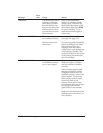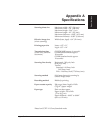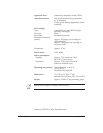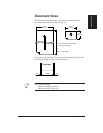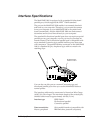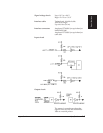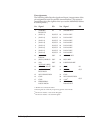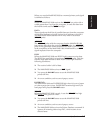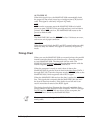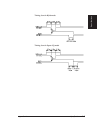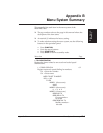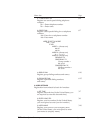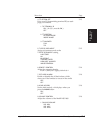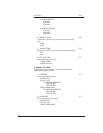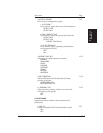
A-8 Specifications Appendix A
AUTO FEED XT
When this signal is low, the MultiPASS 1000 automatically feeds
the paper one line when it receives a carriage return (CR) control
code. This signal is valid only in Epson LQ mode.
INIT
INIT from the computer resets the MultiPASS 1000 to its initial
power-on state. The BUSY line goes high and any received data is
printed. When INIT goes low, the MultiPASS 1000 resets to the
power-on default state.
ERROR
The MultiPASS 1000 sets the ERROR line low if it detects an error,
such as an out-of-paper condition.
SELECT IN
When this signal is high, the DC1 and DC3 control codes are valid;
otherwise they are invalid. This signal is valid only in Epson LQ
mode.
Timing Chart
When you use the MultiPASS 1000 as a normal printer, the parallel
interface transfers data in one direction only—from the computer
to your MultiPASS 1000. The data path is 8 bits wide. The
MultiPASS 1000 and computer synchronize data transfer with the
interface signals STROBE, ACKNLG, and BUSY.
When the computer is ready to send a byte of data to the
MultiPASS 1000, it puts the byte of data on the data lines (DATA 1
through DATA 8). Then the computer sends a STROBE pulse to the
MultiPASS 1000, which responds with a BUSY signal.
When the MultiPASS 1000 receives the data, it pulses the ACKNLG
line. This signals the computer that the MultiPASS 1000 has read
the byte of data into memory. If the buffer is not full and it can
receive more data it removes the BUSY signal.
The timing charts below illustrate the data and handshake lines
during transfer of one data byte to the computer. DATA 1 through
DATA 8 and the STROBE line are driven by the computer; the
ACKNLG line is driven by the MultiPASS 1000.
N
The use and time of the signals for IEEE 1284-B have not been
made public.



